Chuncheon travel - South Korea, Asia
Chuncheon is the capital city of Gangwon Province in South Korea, located approximately 75 km (47 miles) northeast of Seoul. Chuncheon is a scenic city embraced by lakes and mountains, making it a haven for nature enthusiasts and adventure seekers alike. Renowned as the 'City of Lakes,' its picturesque landscapes are dominated by the serene Soyang Lake and Uiamho Lake, which offer ample opportunities for water sports and leisurely boat rides.
Chuncheon is also celebrated for its vibrant cultural scene, hosting the lively Chuncheon Puppet Festival and the Chuncheon International Mime Festival, drawing artists and audiences from around the globe. Culinary travelers delight in sampling the local specialty, dakgalbi, a spicy stir-fried chicken dish that's a must-try for anyone visiting the city.
Looking for an unforgettable journey through South Korea? Explore our premium tours here and start planning your adventure
Population: Approximately 300,000 in 2024.
Economy: a city with a diverse and evolving economy that reflects its agricultural roots and growing industrial sector. Chuncheon serves as a market center for agricultural produce from the surrounding areas, with rice and soybeans being the main products. Since the 1960s, the city has seen a shift towards light industry, contributing to its economic development.
Chuncheon has gained international attention as a popular tourist destination, particularly after the success of the Korean drama Winter Sonata, which has attracted visitors from across East Asia. The city is also in the process of developing Legoland Korea, set to be the largest Legoland in the world, expected to draw over a million tourists annually upon its opening.
Landmarks: Soyang River Sky Walk, Cheongpyeongsa Temple, Chuncheon Myeongdong Street, Namiseom (Nami) Island, Gangchon Rail Park, Chuncheon National Museum
South Korea
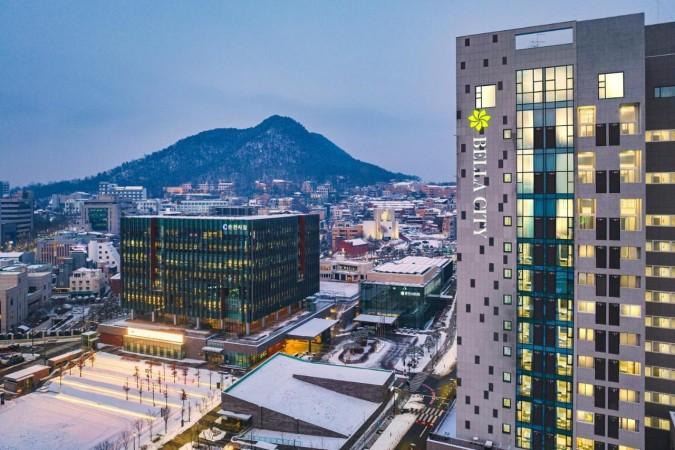
Overview of Chuncheon
History & Culture Influence
Chuncheon has a rich and multifaceted history that has significantly influenced its cultural landscape. Originally settled thousands of years ago, the area has archaeological evidence from the Stone Age, reflecting its long-standing human presence. The city has undergone several name changes, being known as Usooju in 637 AD, Saku in 757 AD, and Chunju in 940 AD, before adopting its current name in 1413. Chuncheon became the capital of Gangwon Province in 1896 and played a pivotal role during the Korean War, particularly noted for the Battle of Chuncheon, which led to extensive destruction but also subsequent rebuilding efforts.
Culturally, Chuncheon is renowned as the birthplace of dakgalbi, a popular spicy chicken dish, which has become a symbol of the city's culinary identity. The city has also gained fame through its association with the Korean Wave (Hallyu), particularly due to the drama Winter Sonata, which showcased its picturesque landscapes and contributed to a surge in tourism. Festivals such as the Chuncheon International Mime Festival and the Chuncheon Puppet Festival highlight the city's vibrant arts scene, while the Makguksu Festival celebrates its signature cold buckwheat noodles.
Chuncheon's cultural identity is further enriched by its natural beauty, with lakes and mountains providing a backdrop for outdoor activities and festivals that celebrate the changing seasons.
Interaction with The Locals
In Chuncheon, tourists are often greeted with enthusiasm and curiosity, as local residents take pride in their city and are eager to share its beauty and cultural heritage. English may not be widely spoken among older generations, but younger residents and those involved in the tourism industry often have a good grasp of the language, making communication smoother for international visitors. The city's ethnic makeup is predominantly Korean, with a small percentage of foreign residents, which contributes to a culturally homogenous environment where traditional Korean customs and values are predominant.
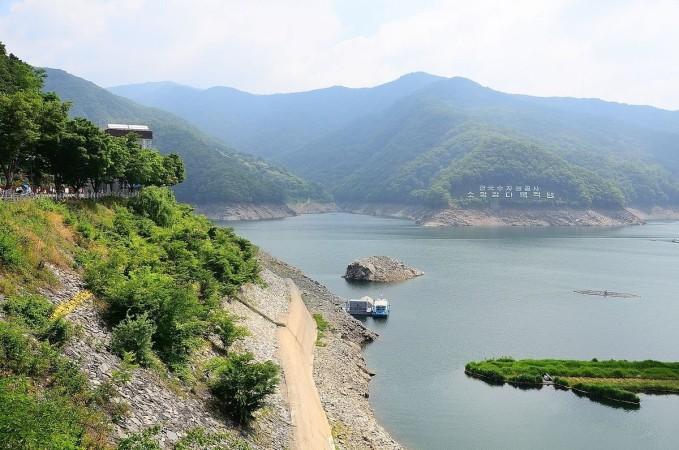
Soyang Lake, Chuncheon - © gather
Top Attractions in Chuncheon
Chuncheon, a city famed for its natural beauty and cultural vibrancy, offers a range of attractions that cater to various interests. Here are some of the top attractions in Chuncheon, complete with details on their locations:
Soyang Dam
Location: Soyang Dam is located on the Soyang River, approximately 10 kilometers (6 miles) northeast of Chuncheon in Gangwon-do Province.
Soyang Dam, one of the largest rock-fill dams in Asia, offers breathtaking views of the surrounding water and mountains. It's a popular spot for photography and leisurely walks, especially during the autumn when the foliage is spectacular. Built in October 1973, Soyang Dam is the largest dam in Korea, stands 123 meters high and 530 meters long and can hold up to 29 million tons of water.
Nami Island
Location: Namiseom-gil, Chuncheon-si
Accessible via a short ferry ride, Nami Island is renowned for its tree-lined avenues and was the filming location for the famous Korean drama "Winter Sonata." The island is a must-visit for its picturesque landscapes and cultural events.
Gangchon Rail Park
Location: 1383 Gimyujeong-ro, Sindong-myeon, Chuncheon
Experience the scenic rural countryside of Chuncheon on a rail bike. Gangchon Rail Park offers a unique way to view the landscapes along old railroad tracks, making it a fun activity for families and couples.
Chuncheon Puppet Theater
Location: 277-3 Sinsau-dong, Chuncheon-si, Gangwon-do
Delve into the world of puppetry at the Chuncheon Puppet Theater, which hosts the annual Chuncheon Puppet Festival. The theater showcases a variety of puppet shows year-round, highlighting both traditional Korean puppetry and modern interpretations.
Chuncheon Myeongdong Street
Location: 62-1 Geumgang-ro, Chuncheon-si, Gangwon-do
As the culinary heart of the city, Chuncheon Myeongdong Street is famous for its dakgalbi (spicy stir-fried chicken) restaurants. This bustling area is great for food enthusiasts looking to sample local flavors and shop at trendy boutiques.
Cheongpyeongsa Temple
Location: 810 Obongsan-gil, Buksan-myeon, Chuncheon-si, Gangwon-do
Nestled in the folds of Obongsan Mountain, Cheongpyeongsa Temple is a serene Buddhist temple dating back to the Goryeo Dynasty. The journey to the temple involves a scenic walk through lush forests, providing a peaceful retreat for spiritual reflection.
Kim You-jeong House of Literature
Location: 1430-14 Kimyoujeong-ro, Sindong-myeon, Chuncheon-si, Gangwon-do
This museum is dedicated to one of Korea’s prominent modern writers, Kim You-jeong. The house offers insights into his life and works and serves as an inspiration for literature enthusiasts.
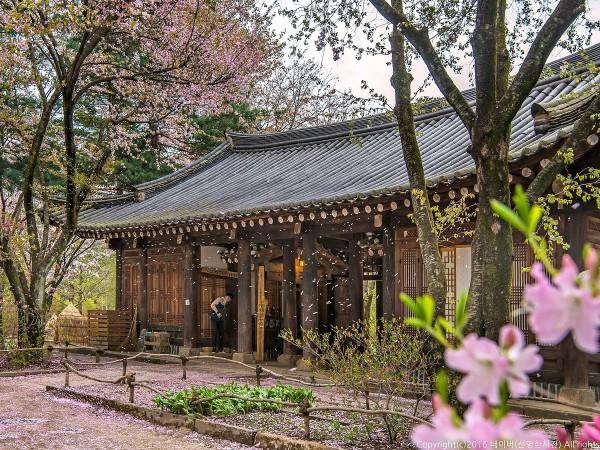
Nami Island, Chuncheon - © gather
Must-Try Dishes in Chuncheon
Chuncheon is famous for its Dakgalbi, a spicy stir-fried chicken dish cooked with vegetables and rice cakes on a hot plate, offering bold flavors and a fun, communal dining experience. For a refreshing meal, try Makguksu, cold buckwheat noodles served with a tangy broth or spicy sauce, perfect for warmer days. Seafood lovers shouldn’t miss Songeo Gui, grilled trout known for its fresh and delicate flavor, sourced from local rivers.
Dakgalbi
Dakgalbi is arguably Chuncheon's most famous culinary export. This spicy stir-fried chicken dish is cooked with sweet potatoes, cabbage, perilla leaves, and tteok (rice cakes) on a hot plate. It's known for its hearty, spicy flavor and communal eating style, making it a favorite among both locals and visitors.
Makguksu
A traditional Korean noodle dish, Makguksu is made with buckwheat noodles served cold in a tangy broth or with a spicy sauce. It's typically garnished with sliced cucumber, pear, and a boiled egg, offering a refreshing and satisfying meal, especially during the warmer months.
Chuncheon-style Suyuk
Suyuk refers to boiled pork slices, which are enjoyed with a dipping sauce made of soybean paste or salted shrimp. In Chuncheon, this dish is served with a variety of fresh local herbs and garlic, highlighting the simplicity and freshness of Korean ingredients.
Wondering why Seoul is so popular among travelers? Click here to uncover its must-see attractions and hidden wonders.
Corn Cheese
A popular snack and side dish in Chuncheon, corn cheese is a simple yet delightful combination of sweet corn and melted cheese. It's often seasoned with sugar and mayonnaise, providing a creamy and sweet flavor that contrasts delightfully with spicier dishes.
Songeo Gui
Songeo Gui is grilled trout, a specialty in Chuncheon due to the city's proximity to fresh river waters. The fish is typically grilled whole with minimal seasoning to allow the natural flavors to shine, making it a must-try for seafood enthusiasts.
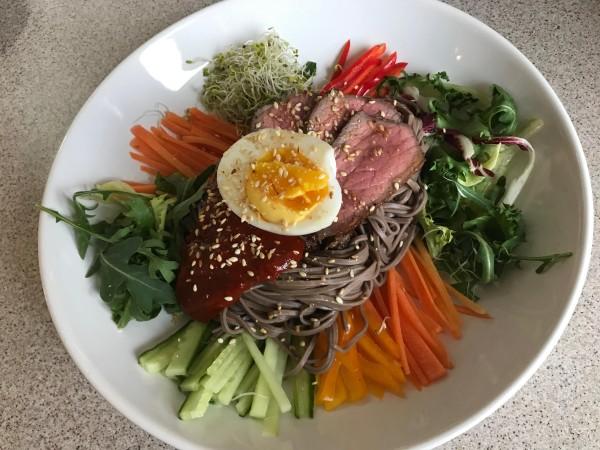
Festivals & Local Celebrations
Chuncheon International Mime Festival
Time of Year: Spring (exact dates vary annually, typically in May)
Experience a vibrant display of mime performances and street art at this renowned festival. Artists and audiences from around the world gather to enjoy a variety of performances, workshops, and interactive events dedicated to celebrating the art of mime.
Chuncheon Makguksu & Dakgalbi Festival
Time of Year: June 18 to June 23, 2024
Located at the Legoland Korea Resort parking lot, this festival honors Chuncheon's culinary favorites, makguksu (cold buckwheat noodles) and dakgalbi (spicy stir-fried chicken). The event includes food tastings, cooking demonstrations, and cultural performances, offering a deep dive into local flavors.
Chuncheon Puppet Festival
Time of Year: Summer (exact dates vary annually, typically in July)
The festival presents an enchanting array of puppet shows and performances by both local and international puppeteers. It features workshops, exhibitions, and interactive activities, making it an engaging celebration for families and children.
Chuncheon Marathon
Time of Year: October (exact date varies annually)
Known as one of Korea’s oldest marathons, this event draws runners from across the nation and beyond. With various distances available, participants can enjoy the marathon route that offers picturesque views of Chuncheon’s stunning landscapes.
Soyang Festival
Time of Year: September
This festival highlights the cultural history of the Soyang Dam through a series of performances, exhibitions, and local food tastings. It's a celebration of the region's heritage and the natural beauty surrounding the dam.
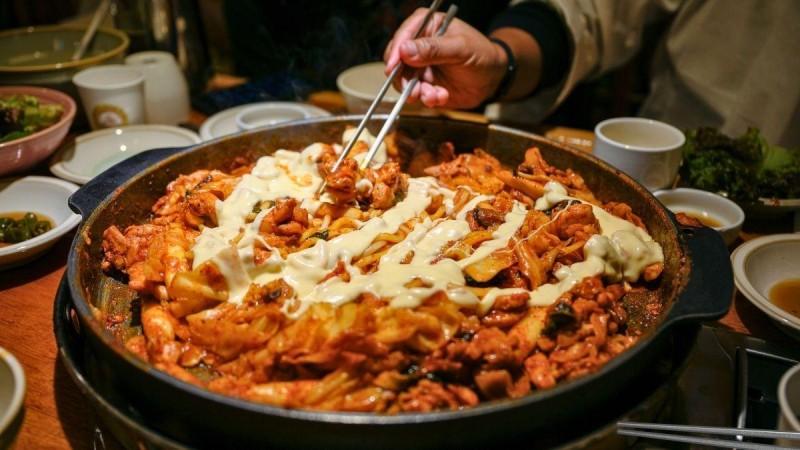
Dakgalbi Festival - © gather
What to Do in Chuncheon
Explore Nami Island
Accessible via a short ferry ride, Nami Island is renowned for its tree-lined avenues and was the filming location for the popular Korean drama "Winter Sonata". Visitors can enjoy walking, biking, or even zip-lining through the picturesque landscapes.
Thinking about visiting Namhae? Our detailed article here shows why it’s a hidden gem worth discovering.
Hike at Soyanggang Sky Park and Sky Walk
The Soyanggang Sky Park and Sky Walk offer breathtaking views of the Soyang River and the surrounding mountains. Visitors can take a leisurely stroll along the sky walk and enjoy the scenic beauty of Chuncheon's natural landscapes.
Visit Cheongpyeongsa Temple
Nestled in the folds of Obongsan Mountain, Cheongpyeongsa Temple is a serene Buddhist temple dating back to the Goryeo Dynasty. The temple provides a peaceful retreat for visitors to learn about Korean
Buddhist culture and architecture.
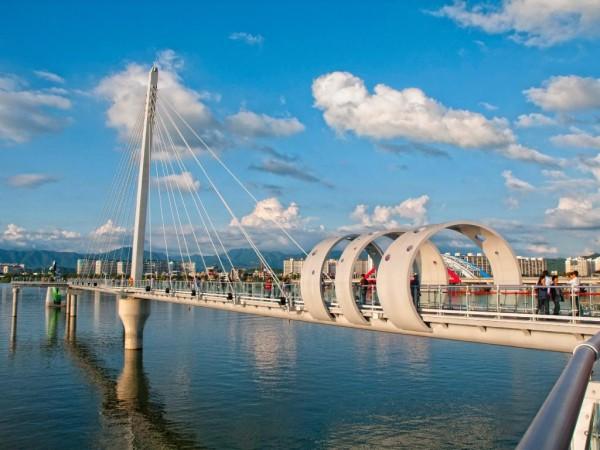
Hike at Soyanggang Sky Park - © gather
Weather in Chuncheon
Chuncheon typically experiences a humid continental climate with four distinct seasons.
Temperature
Summer (June-August): Average daily highs of 27-30°C (81-86°F) and lows of 18-22°C (64-72°F)
Winter (December-February): Average daily highs of 2-7°C (36-45°F) and lows of -6 to -2°C (21-28°F)
Spring (March-May) and Fall (September-November): Mild temperatures with highs of 10-21°C (50-70°F) and lows of 3-16°C (37-61°F)
Precipitation
Annual rainfall: Approximately 1,200-1,800 mm (47-71 inches)
Rainy season: The wettest months are July and August, with over 150 mm (6 inches) of rain each
Dry season: January to April, with the least rainfall in January (around 10 mm or 0.4 inches)
Best Time to Visit
Spring (April-May): Mild temperatures, low rainfall, and beautiful spring foliage
Fall (September-October): Pleasant weather, low humidity, and vibrant autumn colors
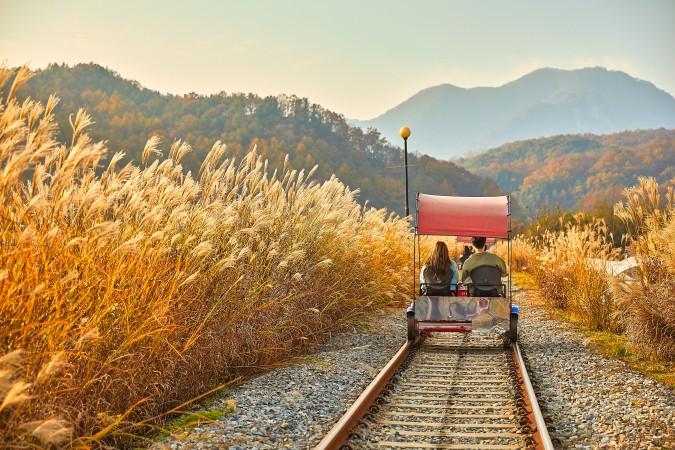
Gangchon Rail Park - © gather
Essential Travel Information
Getting to Chuncheon
Airport Transfers
Incheon International Airport (ICN) and Gimpo International Airport (GMP) are the primary airports serving Chuncheon. Various transfer services are available, including private taxis and shuttle services. The journey from Incheon Airport to Chuncheon typically takes about 1 hour and 50 minutes to 2 hours, depending on traffic conditions.
Taxi Services
Taxis are readily available for hire at the airports and throughout the city. They provide a convenient option for direct transfers to your destination within Chuncheon. Services like Taxiyo offer private car transfers for a comfortable journey.
Getting Around Chuncheon
Public Transit
Chuncheon has a reliable public bus system that connects various neighborhoods and attractions. Buses are affordable and operate frequently, making them a convenient option for getting around the city.
Taxis
Taxis are a popular mode of transportation in Chuncheon. They can be hailed on the street or booked via phone. Fares are metered, and some drivers may speak basic English.
Ride-Sharing Services
Ride-sharing services like KakaoTaxi are available in Chuncheon, allowing travelers to book rides through mobile apps. This option provides flexibility and convenience for getting around the city.
ATM and Banking Services
ATMs
Chuncheon is well-equipped with plenty of ATMs, making cash withdrawals a breeze.
- Availability: With over 111 ATMs across the city from major banks like Shinhan Bank, KEB Hana Bank, and Woori Bank, you’ll find them conveniently located in shopping districts and near popular tourist spots.
- International Cards: Most ATMs accept international cards, but to be safe, look for machines displaying VISA or Mastercard logos to ensure compatibility.
- 24-Hour Access: Many ATMs offer 24-hour access, so you can easily grab cash whenever you need it.
Banking Facilities
Chuncheon also has a variety of local and international banks offering services like currency exchange and financial advice. Key banks include Shinhan Bank, KEB Hana Bank, Woori Bank, and KB Kookmin Bank, with branches conveniently scattered throughout the city.
Accommodation Choices
Chuncheon caters to all types of travelers with a range of accommodations:
Hotels
- Hotel The Designers: Known for its stylish, modern vibe and comfortable amenities, this hotel is located near the heart of the city.
- Chuncheon Bandi Hotel: A traveler favorite, offering spacious rooms and easy access to top local attractions.
Guesthouses and Hostels
- Chuncheon Guesthouse: A budget-friendly, cozy spot where you can meet fellow travelers.
- Backpackers Chuncheon: Perfect for budget-conscious visitors, this hostel offers dormitory-style accommodations and communal spaces to socialize.
Other Options
- Traditional Hanok Stays: For a truly unique experience, try staying in a hanok—a traditional Korean house that gives you a glimpse into Korea’s rich culture and architectural history.
Articles for you

Explore Yala National Park - Sri Lanka Travel, Asia
Tucked away in Sri Lanka’s southeastern corner, Yala National Park is where wild nature meets deep tradition. Known worldwide for its leopard population, the park is also home to elephants, sloth bears, crocodiles, and hundreds of bird species. Beyond wildlife, Yala opens doors to a cultural landscape dotted with ancient temples, Buddhist ruins, and coastal villages. For travelers seeking more than just a safari, Yala offers a chance to explore eco-tourism, local communities, and sacred heritage sites.
Population: The Yala National Park area doesn’t have a human population.
Economy: The economy around Yala National Park thrives on a blend of eco-tourism, agriculture, and local services. Safari tours, eco-lodges, and cultural experiences drive steady income for nearby towns like Tissamaharama and Kataragama, supporting thousands of families.
Landmarks: Famous for Block I of Yala and wildlife encounters, including elephants, sloth bears, crocodiles, and exotic bird species.

Explore Galle - Sri Lanka Travel, Asia
Nestled on Sri Lanka’s southern coastline, Galle is a vibrant city where history meets the sea. Its cobbled streets, colonial architecture, and serene beaches make it a must-visit destination for travelers seeking a blend of culture, adventure, and relaxation. A UNESCO World Heritage site, Galle captivates visitors with its Dutch Fort, bustling markets, and friendly locals. Whether you’re exploring the ramparts at sunset or savoring fresh seafood by the shore, Galle promises an unforgettable journey into Sri Lanka’s heritage.
Population: Approximately 113,000 in 2023.
Economy: Galle’s economy thrives on tourism, trade, and fisheries. The city’s historic fort, colonial architecture, and coastal charm draw thousands of international visitors each year, making tourism its main economic driver. Fishing remains vital for local livelihoods, supplying fresh seafood across the region.
Landmarks: Famous for the Galle Fort, Dutch Reformed Church & Maritime Museum, and Unawatuna Beach.

Explore Bentota - Sri Lanka Travel, Asia
Nestled along Sri Lanka’s southwestern coast, Bentota is a tropical paradise that blends golden beaches, vibrant culture, and thrilling adventures. Famous for its calm waters, luxury resorts, and scenic river estuary, Bentota has become a top destination for travelers seeking both relaxation and authentic experiences. From serene beach walks at sunrise to adrenaline-pumping water sports, this coastal town offers a perfect balance of leisure and exploration. With its proximity to Colombo and Galle, Bentota is easy to reach, making it an ideal stop for both short escapes and extended holidays.
Population: Approximately 37,000 in 2023.
Economy: Bentota’s economy thrives mainly on tourism, which drives local businesses such as hotels, restaurants, and wellness retreats. The town also benefits from fishing, coconut cultivation, and handicrafts like wood carving and batik textiles. Many residents rely on the growing demand for water sports and Ayurvedic treatments, making tourism the backbone of both income and employment in the area.
Landmarks: Famous for Bentota Beach, Bentota River Safari, and Kande Vihara Temple.

Explore Mirissa - Sri Lanka Travel, Asia
Mirissa is a charming coastal town on Sri Lanka’s southern shoreline. Known for its golden beaches, turquoise waters, and vibrant marine life, it has become a must-visit stop for travelers exploring the island. Many come for whale watching, surfing, and sunset views at Coconut Tree Hill, but Mirissa offers much more than postcard beauty. The fishing boats you see anchored by the bay carry generations of stories. Local traditions, delicious cuisine, and a laid-back rhythm of life shape every visitor’s experience.
Population: Approximately 4,700 in 2023.
Economy: Mirissa’s economy is largely shaped by its coastal location. Fishing has long been the backbone of local livelihoods, with generations relying on the Indian Ocean for income. In recent decades, tourism has become the main driver of growth, thanks to whale watching, surfing, and beachside hospitality.
Landmarks: Famous for Mirissa Beach, Coconut Tree Hill, and Parrot Rock Bridge.

Explore Nuwara Eliya - Sri Lanka Travel, Asia
Tucked away in the Central Highlands of Sri Lanka, Nuwara Eliya is often called “Little England”. With its rolling tea plantations, cool misty mornings, and colonial charm, this mountain town feels like a step into another world. Travelers come here to breathe fresh air, walk through flower gardens, sip the finest Ceylon Tea, and enjoy a pace of life far from the island’s busy cities. Whether you’re drawn by scenic landscapes, heritage architecture, or the warmth of its people, Nuwara Eliya is a destination that blends nature, culture, and history in perfect harmony.
Population: Approximately 781,000 in 2023.
Economy: Nuwara Eliya’s economy thrives mainly on tea production, as it sits in the heart of Sri Lanka’s central highlands, famous worldwide for Ceylon Tea. The city also benefits from a growing tourism industry, attracting visitors with its colonial charm, cool climate, and scenic landscapes.
Landmarks: Famous for Gregory Lake, Hakgala Botanical Garden, and Victoria Park.

Explore Sukau - Malaysia Travel, Asia
Nestled on the banks of the Kinabatangan River in Sabah, Malaysian Borneo, Sukau is a destination where wildlife, culture, and conservation come together. Known as one of Asia’s top spots for river safaris and eco-tourism, this quiet village offers a front-row seat to encounters with Bornean orangutans, pygmy elephants, proboscis monkeys, and exotic birdlife.
Population: Approximately 1,400 in 2019.
Economy: Sukau’s economy is shaped by its riverine location and natural resources. Traditionally, the Orang Sungai community relied on fishing, small-scale farming, and forest gathering for their livelihood. Today, the village has shifted toward eco-tourism, with river cruises, jungle trekking, and homestays providing income.
Landmarks: Famous for the Kinabatangan River cruises, Gomantong Caves, and Ox-bow lakes and wetlands.
